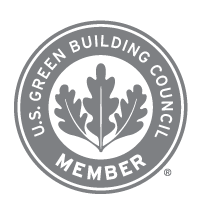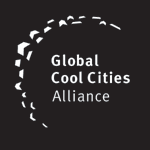Mobilizing Natural Photocatalytic Processes in the Built Environment with TiO2: The Basics
Category: Blog Articles By: Michael Durante
A photocatalyst material such as titanium dioxide (TiO2) can help resolve and detoxicate a variety of dangerous substances, such as a pollutant or even a virus, as the catalyst particles receive energy from the sun. The process is photocatalysis aka photocatalytic oxidation, which already exists in the natural environment. It can be mobilized and accelerated with the use of photo responsive construction materials added to our nature-deficient built environment. Buildings enhanced with photocatalytic technology (PCT) have long proven to work. Roads are the new target.
Let us explore how PCT works in the roadway microenvironment and imagine its monumental implications for the transportation industry and societal climate prioritization.
How the Photocatalytic Process Works
Once energized, TiO2 releases electrons into the surrounding area (up to six meters in all directions), which then combine with oxygen in the air to create the superoxide anion (O2-). Simultaneously, the catalyst TiO2 replaces its lost electrons by attracting electrons from ambient humidity, and then returns to its original state unaffected by the photocatalytic process. The moist air that has lost electrons transforms into hydroxyl radicals (-OH). Superoxide and oxygen radicals, collectively “oxygen radicals,” yield strong oxidative decomposition.
In the case of vehicular emissions, millions of oxygen radicals, created by the TiO2 solar reactivity, attack “bent” or vulnerable compounds such as nitrogen oxides (NOx), carbon dioxide (CO2), and volatile compounds (VOCs) created by fuel combustion. A bent compound has an imbalanced molecular structure in which electrons are underweighted on one side of the structure. The superoxide and oxygen radicals thus penetrate the vulnerable side of the alien molecule and instantly alter its molecular structure in a manner beneficial to the environment. Photocatalytic oxidation is nature’s self-cleaning mechanism and a photo-responsive material like TiO2 accelerates the process.
For NOx, oxygen radicals transform toxic airborne nitrite gas (NO2), which is quite harmful to the human respiratory function, into grounded harmless nitrate (HNO3), interrupting and precipitating the nitrogen cycle. Disposal of the sequestered HNO3 by natural consumption or dilution adds nothing to the overall nitrogen load. Road level PCT hence elegantly eliminates the most dangerous part of the cycle by merely accelerating essential detoxification at the point source. It’s like instantly disarming vehicular exhaust.
Other vulnerable compounds such as water (H2O) do not fully transform into a new molecular phase like NOx, and instead transform into a differently shaped molecule in a manner that is similarly environmentally beneficial. For example, agglomerated water molecules in the form of rain, ice or snow transform into thin films, reducing water build-up by hastening precipitation disposal. This improves rainstorm roadway safety and deters ice or snow formation in colder climates.
A surface course such as a roadway embedded with photo-reactive titanium creates a fully hydroxylated surface that perpetually creates oxygen radicals when irradiated by sunlight. The use of photocatalytic construction materials in our built environment can amplify and accelerate these natural air-purifying processes in places where the altered landscape reflects human consumption.
Improving Near-Roadway Microenvironments
As the most highly efficient photocatalyst, TiO2 is a multifaceted photo-responsive mineral1 rapidly gaining increased scientific and commercial interest for near-roadway microenvironments (ME) by advancing a host of preservation, resilience and environmental benefits, including:
- Depolluting near-pavement air-cleaning applications, where TiO2-reacted surfaces are able to oxidize a variety of pollutants and contaminants, such as those emitted by vehicles (especially NOx and VOCs), thereby reducing ozone pollution and mitigating acid rain formation.
- Producing cool pavement applications in which TiO2-treated surfaces provide a solar-reflective top boundary. This lessens pavement-related radiative forcing (RF) by reducing the convective re-release of solar radiation that leads to Urban Heat Island effect (UHI), slowing oxidation2 to enhance the life-cycle assessment of pavement.
- Promoting more hydrophilic or rapid water-desorbing pavements that are self-cleaning, resist staining and remove contaminants such as mold. Hydrophilic pavements protect against water intrusion for extended pavement life and promote safer roads during poor weather conditions by displacing rain and inhibiting ice formation3.
- Decomposing vehicular microplastic debris by as much as 98 percent with photo-reactive TiO2 4. Dangerous airborne and oceanic microplastic pollution accumulations are estimated to be as much as 75 percent5 sourced from roadway tire and brake-pad wear.
Tested and Proven Performance
Pavement Technology, Inc., in collaboration with the Texas A&M Transportation Institute, embarked on the development of a novel technology to sustainably introduce photocatalytic-grade TiO2 to pavements by combining TiO2 with our long-proven pavement penetrating and preservation technologies. The results have been beyond our earliest forecasts.
In the field, roads retrofit with our family of PlusTiTM photocatalytic penetrants are showing vehicular NOx removal as high as 60 percent and have tripled the solar reflectance values of treated pavements, thereby mitigating the effects of UHI.
A TiO2-Enhanced Roadway’s “Zone of Influence”
Engineers use the concept of “zone of influence” when describing the impact(s) on or from a structure from all dimensions. In this sense, a photocatalytic pavement is a three-dimensional structure reacted through a catalyst material embedded near the surface and by the power of the sun from above.
A TiO2-bearing roadway creates a natural electrochemical energy field that spans about eighteen feet in all directions from the roadway surface. This zone of influence acts like a tunnel of perpetual solar-charged particles that surround vehicles traveling across the roadway as if they were passing through a self-cleaning, photo-catalyzed subway.
As described, certain vehicular-introduced compounds including hazardous air pollutants (HAPs), such as NOx and other Ozone (O3) precursors, become captured and scrubbed (i.e., rendered harmless) before they can escape beyond the zone of influence.
Carbon Reduction Calculations
In addition to our Maltene Replacement Technology (MRT) life-cycle cost calculator, which confirms a 500-to-1 carbon savings in comparison with rebuilds6, PTI has developed a carbon-capture model for our photocatalytic pavement solutions with the help of Texas A&M, the National Center for Pavement Preservation at Michigan State, Alcoa Architectural Coatings, and the U.S. Forestry Service, et al.
One mile of TiO2-enhanced pavement is “valued” at the same carbon reduction capacity as an approximately 15-acre forest. That 15-acre-forest equivalent pavement, using a conservative, discounted weighted average ten-year service
life, can offset the pollution of as many as 375 automobiles or more than 4,000 tons of carbon equivalents annually.
Applied to the Paris Agreement 2030 carbon pricing model [$50-$100 per ton CO2e], one mile of PlusTi™-enhanced roadway has a net present value of $75,000, which is three-times the current estimated capital cost of the upgrade. In direct financial cost, a unit of carbon removed via a PCOPCT-enhanced pavement costs only 19c ($1 per car per year), while other carbon-capture technologies are estimated to cost as much as $200 or more per unit of carbon removed. 7
Photocatalytic pavements are highly productive at removing carbon because the primary mobile-sourced pollutant, i.e., NOx – is 298 times the environmental value (toxicity) of a unit of CO2 per the EPA and the Clean Air Act (CAA).
Conclusion
Roadway microenvironments are a critical and advantaged target for agencies promoting more aggressive carbon neutral priorities. Pavement preservation programs leveraging PCT are now leading the way toward a cleaner, healthier low-carbon future.
- “Polymers, Light and the Science of TiO2“, DuPontTM Ti-Pure® Titanium Dioxide, DowDuPont, www.dow-dupont.com.
- Gopalakrishnan K, et al., Climate Change, Energy, Sustainability, and Pavements, Springer, 2014.
- Arainpour F and Farzaneh M, “On Hydrophobic and Icephobic Properties of TiO2-Doped Silicon Rubber Coatings”, Department of Applied Sciences, Universite du Quebec, International Journal of Theoretical and Applied Nanotechnology, 2012.
- Nabi I and Bacha A, et al., “Complete Photocatalytic Mineralization of Microplastic on TiO2 Nanoparticle Film”, iScience, July 24, 2020.
- Carrington D, Airborne “Plastic Pollution Spiraling around the Globe,” study finds, The Guardian, April 12, 2020.
- Chehovits J and Galehouse L, “Energy Usage and Greenhouse Gas Emissions of Pavement Preservation Processes for Asphalt Pavements,” Transportation Research Board, 2010.
- Elon Musk Foundation | XPRIZE Carbon Removal







